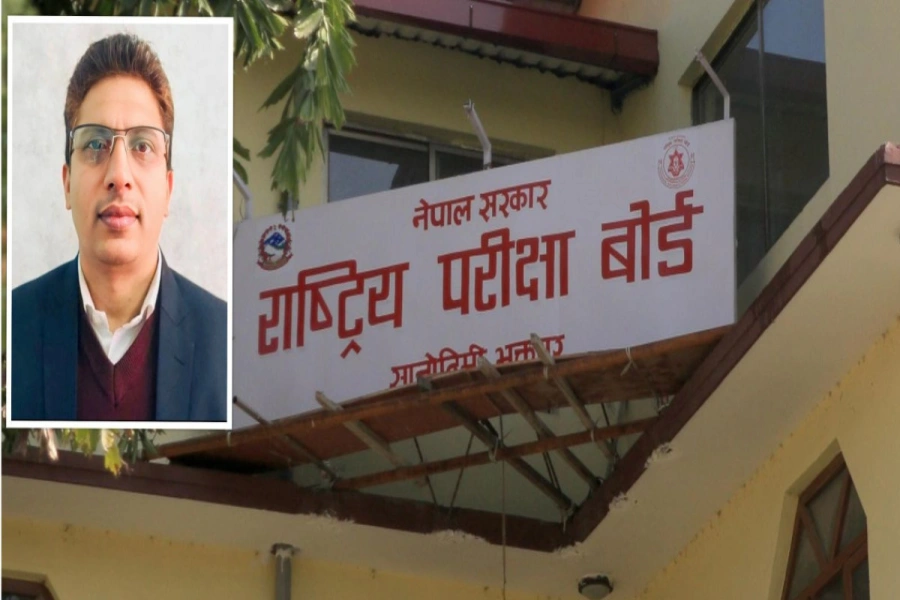CP Chandrasekhar is a Professor at the Centre for Economic Studies and Planning at Jawaharlal Nehru University and the author of The Market that Failed: Neo-Liberal Economic Reforms in India. He is a vocal critic of the neo-liberal economic order. But why is neoliberalism bad for India and Nepal? What are its major flaws? Mahabir Paudyal and Prashant Lamichhane caught up with veteran professor when he was in Kathmandu last week.
Nepal and India adopted liberalization almost at the same time during the 1990s. Thirty years on, what kind of impact has it had in the two countries?
You need to look at liberalization at two levels. Cross-country liberalization, which is a set or package of policies implemented independent of per capita income, income level and structure of economy. It is implemented across the globe. Second is a country-specific case, dealing with specific ways in which a country would be affected depending on its size and structure. But there are some common fallouts.
What are those common fallouts of embracing liberalization?
At the macroeconomic level, it includes a degree of deindustrialization, whereby existing industries get undermined, or are displaced by foreign firms either in the form of imports, or they come, produce and sell in your market. In a country like Nepal, it may be imported, in big market like India foreign firms will come and set up capacities to produce and sell in the Indian market. In the process, they displace Indian businesses and enterprises. Certain degree of deindustrialization inevitably follows.
Secondly, liberalization very often involves removing state support for the agriculture sector. So subsidies for fertilizers, seeds, electricity, etc may be cut. Agriculture becomes non-viable. You are not able to get the prices needed to cover higher costs. You face an agrarian crisis, which is result of cost of cultivation being high and prices being low because of the international competition.
In medium term, this undermines growth. There is loss of regular jobs. So people have to be self-employed or have part time jobs or migrate to other countries, say to the Gulf in case of Nepal and India.
But haven’t even the countries with liberalized economies done rather well?
APF to form over 170,000 disaster informant groups across Nepal

Because of financial liberalization, you see big boom in real state, stock market and debt market because a lot of foreign firms may be coming and investing in stock market. So from outside, you say ‘oh the country looks richer.’ But the benefit of that richness goes to very few people. One common tendency in the countries that have liberalized is sharp increase in inequality. Government data does not capture this process of increasing inequality. This is aggravated by the fact that the state cuts back its expenditure because everything is given to the private sector. All sorts of welfare measures are either diluted or reduced. Process of development becomes unequal.
Agrarian crisis, deceleration in manufacturing and growth, increasing inequality, and inability of the government to come out with mitigating factors to help improve the situation are common to countries that have adopted liberalization. This has happened in India. And this has happened in Nepal as well.
How is India’s example instructive for Nepal?
Between 2000 and 2009, there was big credit boom in India because there was money coming into the economy. People who could not get loan earlier could now go to the bank, get loan and buy automobiles, refrigerators, TVs etc. Everything was bought on loan. For some time total loan given by the banks comprised around 20-22 percent of GDP. Now it is close to 60 percent. When people take these loans and buy all those things, those demands will be met by foreign firms. From outside you see a big growth bubble. But that growth is riding on this debt. Now those who borrowed are not able to pay back. There is a huge increase in nonperforming assets. Now the banks have cut back lending and suddenly there is slowdown in this boom. Crisis would have been much severe were it not for remittances. I think the same applies to Nepal.
In your view how has liberalization specifically affected Nepali economy?
Nepal had very few industries, accounting for 7 or 8 percent of GDP. If you liberalized in this situation, then increasing the share of manufacturing in GDP would be difficult because your market is flooded with goods from outside, either from India or China. So this undermines the ability to move into manufacturing. If you have crisis in agriculture and manufacturing, you fall back on services. Either you rely on remittance from foreign workers or you go into trade or tourism which do not necessarily give you good jobs.
Remittance is very volatile. Remittance can stop if there is war in the Gulf. Thus for Nepal, unless you find some ways to develop on your own, liberalization will undermine the ability of the economy to generate its own growth. Also it would be wishful thinking to believe foreign capital will come all the time. Liberalization forces you into dependence on sectors with low-paying jobs and on remittance, both of which are unstable.
Leftist forces in Nepal have started to advocate for a socialist economy. What do you make of it?
I am watching the unfolding left-right polarization in Nepal with interest. If a left government comes to power, as is being speculated, it will be historic development even by international standards. If that really happens, every major international agency such as Asian Development Bank, World Bank and IMF will come running. They will come with assistance worth a few billion dollars for infrastructures and other sectors. But they will also come with their policy book, which will help intensification of neo-liberal policies. A situation will be created whereby you end up adopting the same neo-liberal policies.
The new government will have a hard option: whether or not to depart from neo-liberal platform and implement alternative policy. There will be pressures from international agencies to stick to neo-liberalism of some sort but the government will also be bound to implement its own policy vision. So it will be up to Nepali people to tell the left government, if at all elected, that we don’t want money with string attached. But that will be difficult for the new government. The government has to be strong enough to resist outside pressure.
Do you suggest such a government completely ditch existing policies?
They should. They have to. Nepal will have to take some tough decisions relating to land reform, minimum work, education and health. Are you willing to spend money to improve productivity of agriculture and create public distribution system which can bring food to the people in urban areas at affordable prices? But the government often falls into the trap of accepting a few billion dollars to build roads, bridges or some tourism infrastructures. With the first option, growth will be gradual but egalitarian and once it gathers momentum, it will be sustainable. With the neo-liberal option, growth will be unsustainable.
Nepal has practiced neo-liberal economic formula for nearly three decades now. How has the report card been?
From what I have read about Nepali economy, I can say that neo-liberalism has been a disaster in Nepal. There was a huge increase in Gini Coefficient, about 13 percent, over a period of six or seven years. That’s a disaster.
When Latin America under Lula and Chavez moved away from neo-liberalism, inequality came down. But when the new government returned to neo-liberal platform, inequality suddenly increased again. The same with developed countries as well. After America gave up the policies it was pursuing until the 1970s, inequality increased. Top one percent of the population has got close to two-thirds of increase in income. Post-Regan and Thatcher, in terms of economic equality, these countries have fared badly. They have not been successful in terms of growth either, at least compared to growth between 1955 and 1970. So it would be a mistake to think that neo-liberal economic policies affect only undeveloped and poor countries; they affect developed countries as well.
What would you advise Nepali policymakers?
It is best to have an option which is not neo-liberal but socialist-oriented. An egalitarian option which builds productive capacities of your own citizens so that they can have decent work. The idea that there is no alternative to neo-liberalism is bogus. Neo-liberalism is a big failure. It does not work. We have many policy alternatives. Nepal will have to look into the one that has more egalitarian, wage-led growth strategy for Nepal. Neo-liberalism has failed in India as well. There was a period from 2003 to 2009 when we rode on credit bubble. Now there is huge unpaid defaulting debt. One million crore rupees of non-performing loans have not been paid back, and 25 percent of this is due to 12 business groups. If that is not a failure, I don’t know what is.
What will be the impact of the left-right polarization on Nepali economy?
I don’t know how long this polarization will hold but it is reflection of the fact that globally there is no center-left. There is no social democratic left. You are either on the left or the right. The whole notion that capitalism will allow a system in which you have centrist position to reform capitalism was thought of as viable for the period from Second World War till the end of 1970s because of the Great Depression. But with the onset of the Thatcher/Regan era starting in the 1980s, there has been a complete destruction of the middle ground.
If you have clear polarization, there is immense potential for the left. But when leftist parties fight each other, they give the opportunity to the right to manipulate. I see a great opportunity for the leftist forces in Nepal to work with common vision. If Nepali left forces stand together and don’t surrender to neo-liberal pressure, which will be immense for a left government, if they remain committed to socialist goals as enshrined in the constitution, I see a real possibility of a transition to a more socialist-oriented economy within the democratic framework.
But haven’t these same leftist forces been keen embracers of neo-liberalism in the past?
Yes, it will be difficult but the hope is that they cannot ignore the condition of the country and to undermine the aspirations of people. They have been part of the liberation struggle. The constitution requires them to shift to socialist-oriented economy. This is a huge achievement for Nepal. Now Nepal’s left parties have no liberty to say we could not do it. They will have to go back to the people for vote again. This makes me hopeful for Nepal’s socialist future but like I said everything depends on how your leaders work.





































